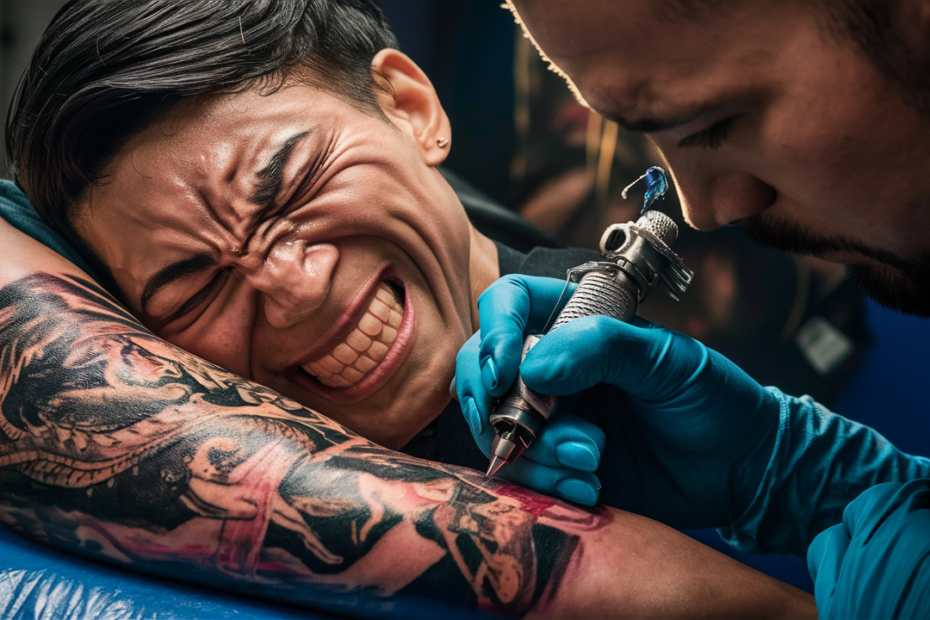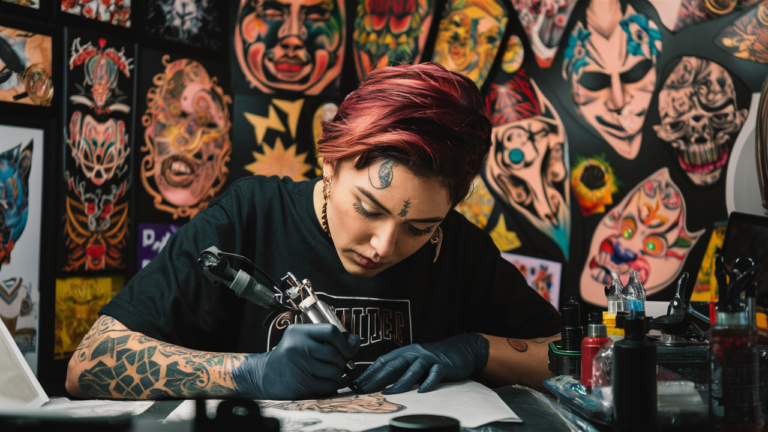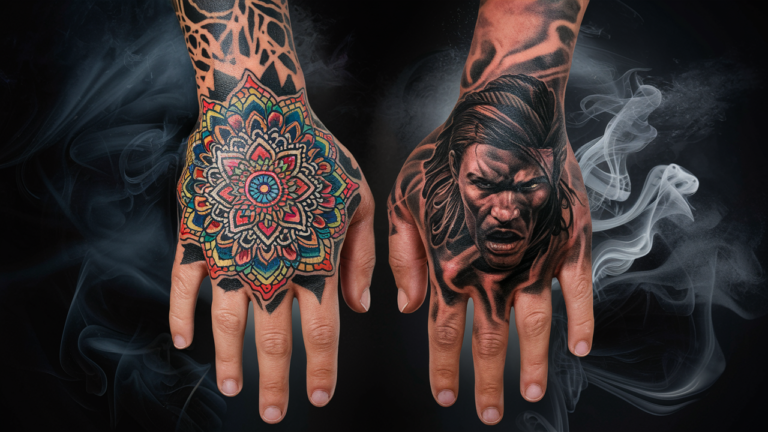Getting a tattoo is a significant and often meaningful decision, but a common concern for many people is the pain associated with the process. If you’re contemplating your first tattoo or adding to your existing collection, you might be wondering, “Does getting a tattoo hurt?” The short answer is yes, but the experience varies widely from person to person and depends on several factors. Let’s dive into the details to help you understand what to expect.
Understanding the Pain
What Does Tattoo Pain Feel Like?
Tattoo pain is often described in a variety of ways: a constant scratching sensation, a burning feeling, or even a sharp, stinging discomfort. Some people compare it to the sensation of a cat scratch, while others liken it to a sunburn. The needle rapidly punctures the skin to deposit ink, which can be uncomfortable, but the degree of pain varies greatly.
Factors Influencing Tattoo Pain
Several factors can influence how much pain you feel during a tattoo session:
- Placement on the Body: Areas with more flesh and muscle, like the upper arm or thigh, tend to be less painful. Conversely, areas with thin skin or near bones, such as the ribs, ankles, or wrists, can be more painful.
- Tattoo Size and Detail: Larger tattoos or those with intricate details require longer sessions, which can increase discomfort. Smaller, simpler tattoos are usually quicker and less painful.
- Your Pain Tolerance: Pain tolerance varies from person to person. Some people might find the process mildly uncomfortable, while others may experience more intense pain.
- Tattoo Artist’s Technique: Experienced tattoo artists often have a gentler touch and more efficient techniques, which can minimize pain.
Managing the Pain
Before the Tattoo Session
- Get a Good Night’s Sleep: Being well-rested can help you handle pain better.
- Stay Hydrated: Drinking plenty of water before your session can keep your skin hydrated and more resilient.
- Eat a Good Meal: Having a substantial meal before your appointment can stabilize your blood sugar levels and prevent faintness or nausea.
- Avoid Alcohol and Caffeine: Both substances can thin your blood, which might increase bleeding and discomfort.
During the Tattoo Session
- Stay Calm and Relaxed: Anxiety can heighten your perception of pain. Try to relax and breathe deeply.
- Take Breaks: If the pain becomes too intense, ask your artist for a short break. Most artists will understand and accommodate your needs.
- Use Numbing Cream: Some numbing creams can be applied to the skin before the session to reduce pain. Check with your artist to see if this is an option.
After the Tattoo Session
- Follow Aftercare Instructions: Proper aftercare can prevent infections and reduce pain during the healing process.
- Use Over-the-Counter Pain Relief: If necessary, over-the-counter pain relievers like ibuprofen can help manage post-tattoo discomfort.
What to Expect in Different Tattoo Areas
Less Painful Areas
- Upper Arm and Thigh: These areas have more flesh and are generally less sensitive.
- Forearm and Calves: These regions are also fleshier and tend to be more tolerable for most people.
Moderately Painful Areas
- Back and Shoulders: The pain can vary depending on the exact spot, but these areas are usually manageable.
- Chest and Stomach: These areas can be more sensitive, especially closer to the ribs.
Most Painful Areas
- Ribs and Spine: These areas are close to bones and have less cushioning, making them more painful.
- Hands, Feet, and Ankles: The skin here is thin, and the proximity to bones increases pain.
- Neck and Face: These regions are highly sensitive and can be quite painful.
Common Myths About Tattoo Pain
Myth 1: Tattoos Hurt the Same for Everyone
Pain tolerance is highly individual, and everyone’s experience will be different. Factors like personal pain thresholds, mental state, and even the day’s physical condition can influence how much pain you feel.
Myth 2: Big Tattoos Are Always More Painful
While larger tattoos do require more time and can extend discomfort, smaller tattoos placed in sensitive areas can be just as painful, if not more so.
Myth 3: Painkillers Can Be Taken Beforehand
It’s generally not recommended to take painkillers like aspirin before a tattoo because they can thin your blood and cause more bleeding. Always consult your tattoo artist before taking any medication.
Conclusion
Getting a tattoo does involve some level of pain, but it is a manageable and often worthwhile experience for those who choose to go through with it. Understanding what to expect and preparing yourself mentally and physically can make the process smoother. Remember, the result—a beautiful, meaningful piece of art on your body—can make the temporary discomfort well worth it.
FAQs
- How long does the pain last after getting a tattoo? Pain usually subsides within a few days, but tenderness and sensitivity can last for a couple of weeks during the healing process.
- Can I get a tattoo if I have a low pain tolerance? Yes, you can. Discuss your concerns with your tattoo artist, and they can help make the process as comfortable as possible.
- What can I do to make a tattoo less painful? Proper preparation, staying hydrated, and using numbing creams can help reduce pain. Communicate with your artist and take breaks if needed.
- Is it more painful to get a tattoo on bony areas? Yes, areas with less flesh and closer to bones, like ribs, ankles, and wrists, tend to be more painful.
- Does the pain decrease with each session? Some people find that they become more accustomed to the sensation with each session, while others find the pain level remains consistent.



